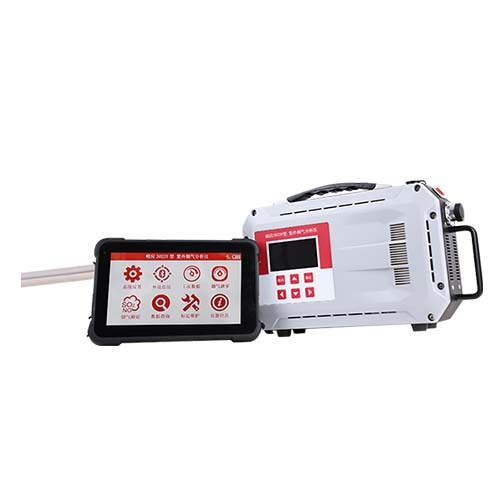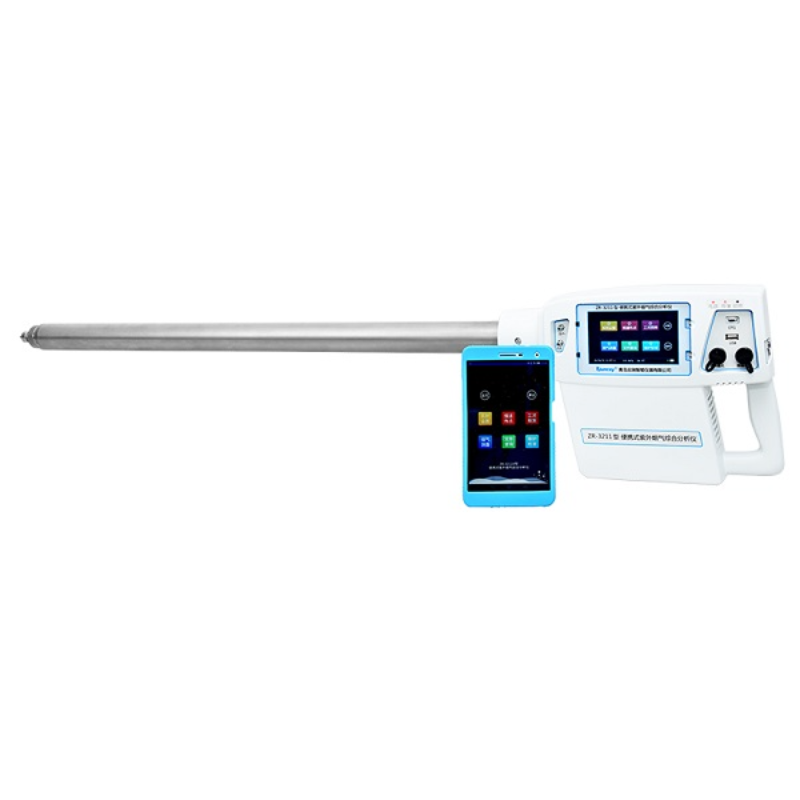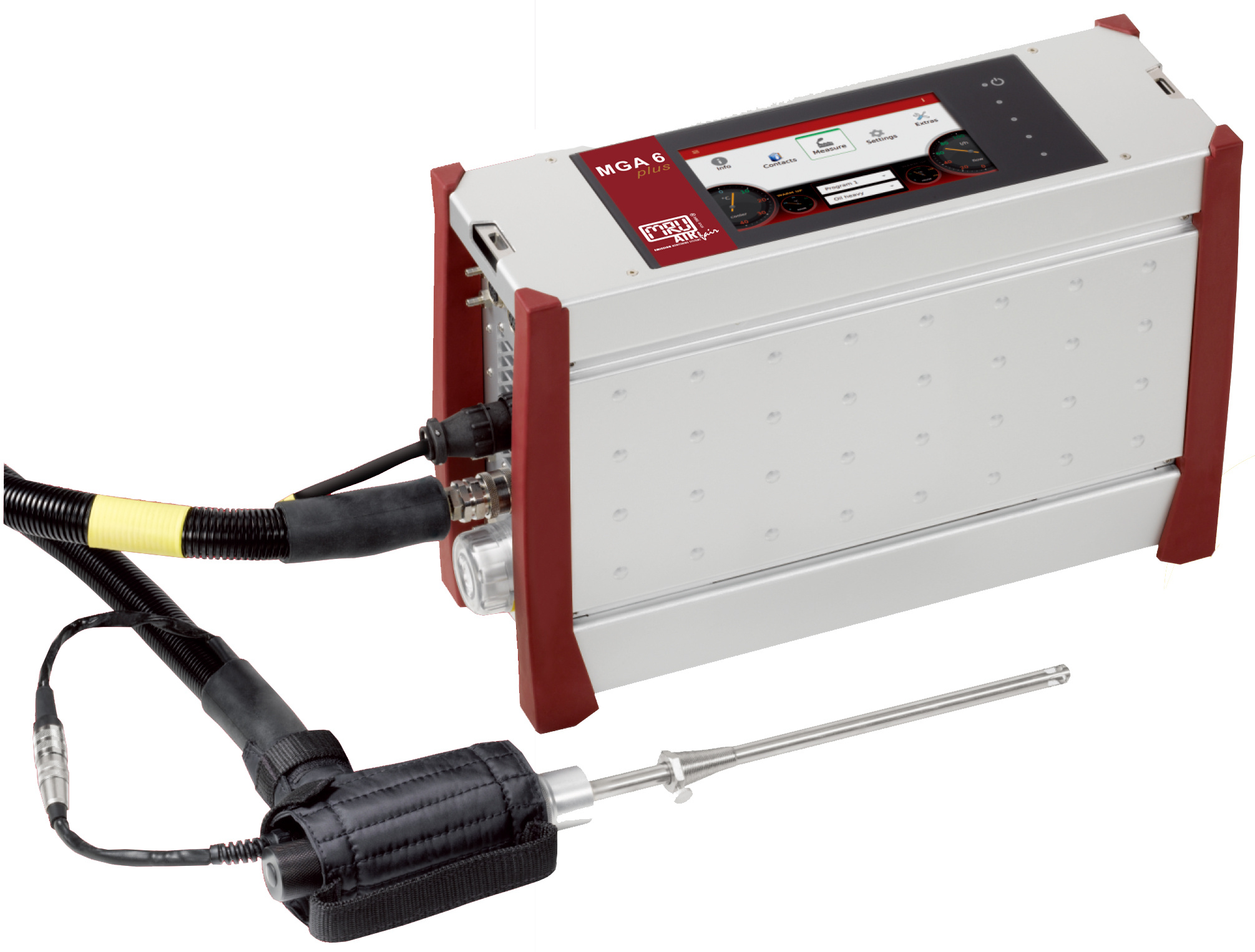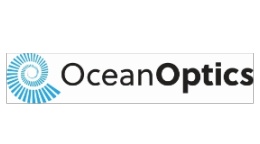方案详情文
智能文字提取功能测试中
Canadal*lCouncil Canada de rocherches Canada Design Optimization for High Sensitivity Two-Color LIl Gregory J. Smallwood, David R. Snelling, Robert A. Sawchuk, Dan Clavel, and Daniel Gareau Institute for Chemical Process & Environmental Technology, National Research Council CanadaBuilding M-9, 1200 Montreal Road, Ottawa, Ontario, Canada K1A 0R6 ·IPCC National Greenhouse Gas Inventories Programme now focusing on emission estimation of aerosols relevant to climate change -there is a need to measure black carbon levels inthe atmosphere at microgram per cubic metre orlower mass concentrations ·emission standards for Diesel particulate matter (PM)are being lowered dramatically, resulting in theadoption of Diesel particulate filters (DPFs) bymanufacturers -there is a need to measure solid carbon levels in theexhaust and in dilution tunnels at microgram percubic metre or lower mass concentrations ·develop high sensitivity Lll to measure sootconcentration at ambient levels for monitoringemissions from post-2007 Diesel engines, urban airquality, black carbon in atmosphere, and emissionsfrom aircraft at altitude Goal: · retain low fluence and two-color pyrometry features ofauto-compensating laser induced incandescence (AC- LII)·limit for measuring soot concentration with our Mobile IlAC-LII system is about 5 ppt (nearly 10 ug/m3) ·target for high sensitivity AC-LII system is ameasurement limit of 0.05 ppt (~0.1 ug/m3) or less ·requires a 100-fold improvement in sensitivity Approach: ·Optimize all aspects of the laser-inducedincandescence method -laser -beam generation optics -sampling cell -receiver collection optics -receiver filters and dichroics -photodetectors -signal detection and digitization electronics -signal analysis software Initial Optical Concept: ·maximize signal collection -low f# lenses -high peak transmission interference filters-higher centre wavelength for lower wavelengthchannel interference filter -wider bandwidth on interference filters ·implemented on enhanced sensitivity Artium ES-LII-200and on a prototype high sensitivity Lll system 2007 heavy duty Diesel engine measured with enhancedsensitivity Lll in dilution tunnel after diesel particulate filter(Artium ES-LII-200). This instrument was able to measure tobelow 1 ppt, but dropped below the noise limit for much of thecycle (no valid data to report). Improved Optical Concept: optimize laser sheet geometry, probe volume dimensions, and collection optics in concert · use Lagrangian invariant principle to constrain designof collection optics and receiver -preservation of the Lagrangian invariant is essentialfor a lossless optical system -minimum product of numeric aperture and aperturediameter cannot be improved upon -L=NAxR=NAxR,= constant for optimumdesign probe volume diameter based on maximum practicalLagrangian invariant of receiver optical system probe volume depth set by desired laser fluence and maximum available laser energy crossing angle minimized, but constrained bypracticality 200 Optical layout of first generation high sensitivity system HS-LII-1 Optical Design for HS-LII-1 (First Generation) · maximum practical design for receiver uses 50 mm dia. optics (dichroic mirrors, interference filters, lenses)-this limits the Lagrangian invariant to L=0.3 mm-improvement of 4x over previous 25 mm design ·use of wider bandwidth and “square” bandpassinterference filters -improvement of ≥ 2x over previous design larger receiver aperture -integrating sphere spectral radiance calibrationenables much larger probe volume diameter-improvement of 80x over previous 1.75 mm dia. ·crossing angle of 15°lengthens probe volume -improvement of 2x over previous 35° design Other Enhancements for HS-LII-1 · laser with 4x more energy was implemented, but with532 nm excitation instead of 1064 nm to potentiallyperform elastic scattering measurements photomultipliers with a larger active area selected to preserve the Lagrangian invariant ·large diameter laminar flow sample cell Ambient black carbon levels measured on coast of BritishColumbia, with photos of CRUISER vehicle and HS-LII-1 Result for HS-LII-1 ·first implementation has ~50x greater sensitivity thanprevious best Lll system · now constrained by noise -actual calibration shows more sensitivity -Q-switch noise from laser dominates signal ·data was acquired on the West Coast of Canada,proving the feasibility of ambient real-time blackcarbon concentration monitoring although functional, instrument had poor S/N at lowestconcentrations Enhancements for HS-LII-2(Second Generation)·photomultipliers with greater cathode radiant sensitivitylow noise PMT/pre-amplifier/differential amplifiercircuits-single circuit board with common ground plane-gold alodine Faraday cages for circuits -shielded and grounded cables 自improved interference filter for higher wavelengthchannel laser with 1064 nm excitation -avoid unintended pickup of scattered 532 nmradiation signal averaging (multipulse operation) ·new sheet formation optics with antireflection coatingsto produce a slightly higher fluence -less expansion of the laser beam and lower losses Comparison of Sensitivity for a Number of AC-LIl Systems System RCSIncreaserelative to(nm) (W/m·srVolt)Mobile ll RCSIncreaseelative to(nm) (W/m3·srVolt)Mobile ll Mobile II 397 2.54·1010 - 782 4.22·1010 - HS-LII-1 445 9.43·105 26,900x 746 4.41·108 95.7x HS-LII-2 445 9.14·105 27,800x 753 1.36·107 3100x Artium LIl-200 402 4.39·10 57.9x 782 4.62·109 9.13x Artium ES-LII-200 447 2.20·108 115x 829 1.91·109 22.1x Further Work: · field evaluation of HS-LII-2 will begin shortly ·anticipate issues due to high sensitivity-pick up of single photon events from room lights-detection of laser flashlamp radiation eventual application to experiments demanding highsensitivity LII
关闭-
1/1

产品配置单
北京欧兰科技发展有限公司为您提供《火焰,燃烧,碳烟中碳烟体积分数检测方案(烟气分析仪)》,该方案主要用于工业气体中碳烟体积分数检测,参考标准《暂无》,《火焰,燃烧,碳烟中碳烟体积分数检测方案(烟气分析仪)》用到的仪器有激光诱导白炽光(LII)烟气分析仪、德国LaVision PIV/PLIF粒子成像测速场仪、PLIF平面激光诱导荧光火焰燃烧检测系统。
我要纠错
推荐专场
烟气监测(CEMS)/烟气分析仪
更多相关方案













 咨询
咨询




